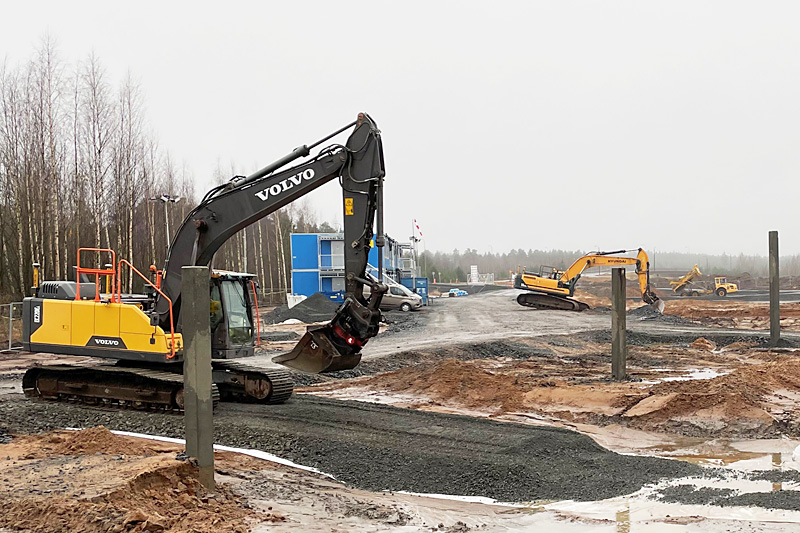Pension Investor Examines Cash Flow in Green Transition Projects

How do institutional investors approach green transition projects and what are the conditions that must be met for their participation? Kari Vatanen, the Chief Investment Officer of the Veritas Pension Insurance Company shares his views on what influences investment decisions. Mikko Turunen, the CEO of Fimpec PMO also provides insights from the real estate and construction perspective.
This is a summary of the fifth episode of Fimpec’s “Kumppanit” podcast which discussed the investment possibilities in green transition projects. “Kumppanit” podcast is hosted by Maiju Hirvikallio, Fimpec’s Director of Communications & Marketing. The podcast is available for listening in Finnish on Spotify.
One crucial aspect when Veritas decides on investment targets is that they must generate sufficient cash flow within a reasonable timeframe. This requirement also applies to green transition projects, making them uncertain investment targets for pension investors in many cases.
“The green transition offers various investment opportunities, such as in energy production and the entire energy infrastructure. In principle, investments in energy infrastructure are suitable for pension investors if they guarantee a stable cash flow, ideally increased annually with inflation. If such opportunities are found, they are very interesting. Also, manufacturers of green transition technology, which are often even better investment targets than infrastructure projects, can be intriguing,” explains Kari Vatanen, Veritas’ Chief Investment Officer, in the podcast.
He continues by mentioning Veritas’ long-standing investments in wind power. In the early stages, the government’s price guarantee for wind-generated electricity provided the necessary certainty for projects. Currently, wind power projects are no longer as appealing from a pension investor’s perspective.
“There is no longer a price guarantee, and there is already so much green electricity available that in new projects, there must be certainty that returns will be generated even when all wind turbines are operational. This is why long-term purchase agreements are important from our perspective. If we invest solely in electricity production without knowing who will buy and at what price, it is too uncertain at the moment.”
Vatanen further emphasizes that it is a challenge for a pension investor if cash flow is expected only 10–20 years in the future. Especially in the current situation, where a 5% interest rate must be considered for financing, it becomes a significant cost over 10 years. According to him, the cash flow from basic infrastructure investments is not enough to compensate if the return starts only after 10 years. This applies not only to wind power but also to solar energy projects, as highlighted by Mikko Turunen, the CEO of Fimpec PMO, in the discussion.
“Such uncertainty can be too great for a pension investor because we need either immediate cash flows or, alternatively, a significant increase in value after ten years,” Vatanen states.
The breakthrough of the hydrogen economy requires a role from the government
Vatanen emphasizes that the hydrogen economy is important, and as an industrial strategy, it could be a winning theme for Finland. However, he does not believe it can succeed through private investors alone.
“From our perspective, the investment decision requires that the technology is profitable. We need a clear picture that the project is economically viable, meaning information about who will use the end product, where the cash flow will come from, and whether it is enough to cover the costs incurred when converting energy from one form to another.”
“In the early stages, when technology is being developed and there is no economically viable process available, public guidance is needed, and above all, a public actor must take the lead until the projects start to look interesting from the perspective of institutional investors. Public funding does not have to be the sole financier, but it must take the lead. A good example of such leadership was the guaranteed price for wind power, which got wind power production off the ground. As an advantage of public funding, I see patience and the fact that the time horizon can easily be 10-20 years. We don’t have that opportunity because we need cash flow to pay pensions every month,” he notes.
“We are talking partly about overcoming the transition period. What kind of collaboration models, project models, and product development models are really needed. Now is the time to determine the game that will solve the energy needs of industry and consumers well into the future,” Turunen adds.
The investment environment is currently challenging
The discussion also covers the investment environment more broadly. According to Vatanen, the current situation does not look particularly good.
“The situation is challenging. Economic forecasts for the coming months are negative. The main reason for this is that the interest rate is significantly higher compared to the situation a couple of years ago. Therefore, financing costs have risen significantly for all companies. At the same time, inflation has increased procurement costs, and wages are also rising. These three elevated cost factors affect simultaneously, and it is difficult to transfer their impact to the income side. The overall economic environment is challenging for many companies.”
Vatanen says that Finland’s situation is particularly difficult due to our economy’s reliance on exports. The weakened economic growth in China, among other factors, has hit European export industries, which is evident in both Finland and Germany, a crucial market for us. Economies that rely more on the service sector, including the United States, where economic growth is still positive, have performed better. Vatanen believes there may be some light on the horizon.
“At least on a hopeful level, we believe that the worst period will be in the winter, especially domestically. Many investments are on hold, and the expectation is that at some point, they will start to open up. The forecast is that economic growth could begin to pick up again after six months.”
“Kumppanit” podcast page (in Finnish)


